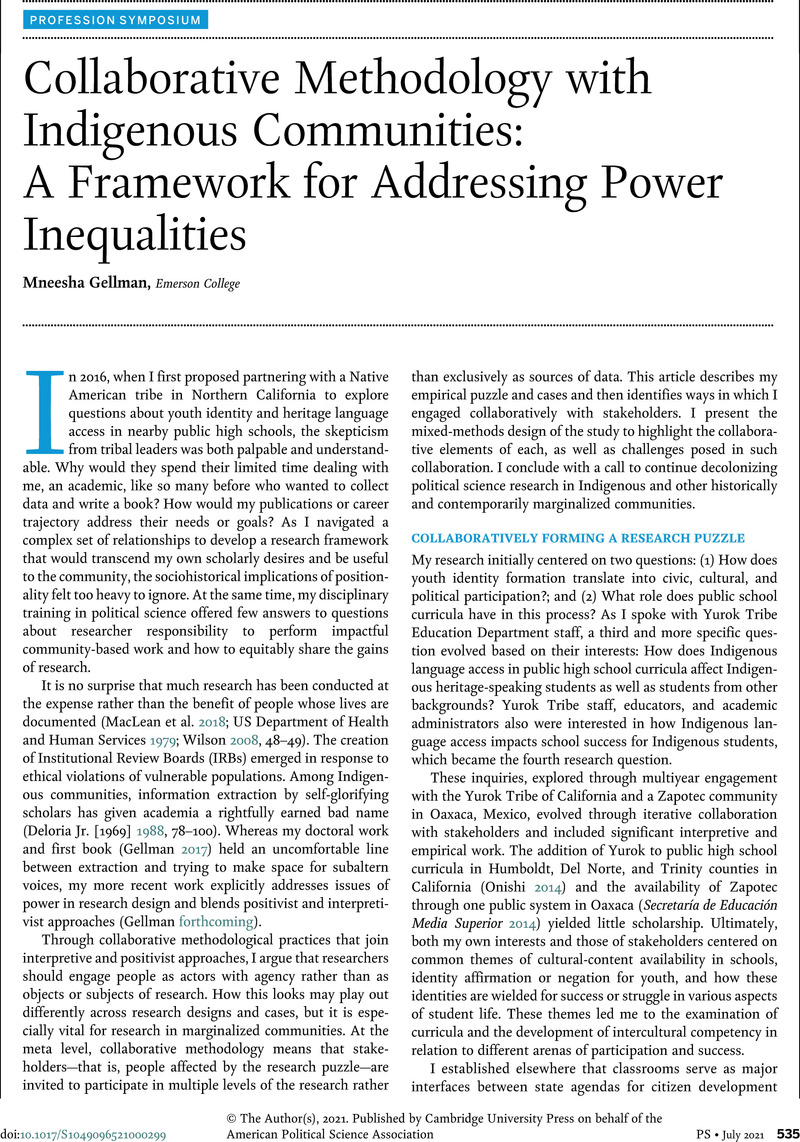Crossref Citations
This article has been cited by the following publications. This list is generated based on data provided by Crossref.
Flores, Thomas Edward
2021.
Everyday Democracy Indicators? How the Study of Democracy Illuminates the Value (and Challenges) of Collaborative Methodologies.
PS: Political Science & Politics,
Vol. 54,
Issue. 3,
p.
565.
Mikhael, Drew
and
Norman, Julie
2021.
Collaboration in Commissioned Research: Benefits and Challenges of Scholar–Practitioner Partnerships in Conflict Contexts.
PS: Political Science & Politics,
Vol. 54,
Issue. 3,
p.
554.
Asiamah, Gildfred B.
Awal, Mohammed S.
and
MacLean, Lauren M.
2021.
Collaboration for Designing, Conceptualizing, and (Possibly) Decolonizing Research in African Politics.
PS: Political Science & Politics,
Vol. 54,
Issue. 3,
p.
549.
Purnell, Philip J.
2024.
Geodiversity of research: geographical topic focus, author location, and collaboration. A case study of SDG 2: zero hunger.
Scientometrics,
Vol. 129,
Issue. 5,
p.
2701.
Heaney, Kristine
Bergevin, Danielle
and
Kelly, Chelsea
2024.
A collaborative approach to develop indigenous specific parenting education.
Family Court Review,
Vol. 62,
Issue. 3,
p.
583.
Mitra, Ankushi
Kline, Curtis
and
Bautista-Chavez, Angie M.
2024.
Civically engaged research in political science: a methodological guide.
Politics, Groups, and Identities,
p.
1.
Queupil, Juan Pablo
and
Álvarez-Figueroa, Francisca
2025.
Multicultural educational leadership with indigenous communities: a literature review.
Journal of Professional Capital and Community,



